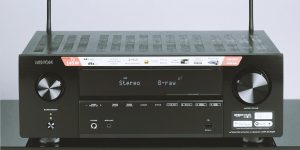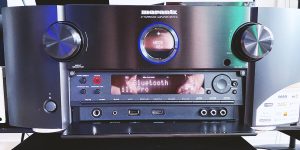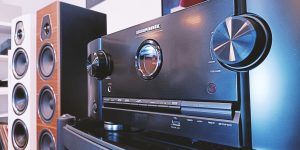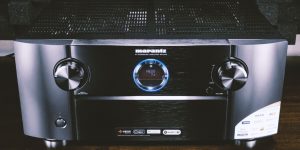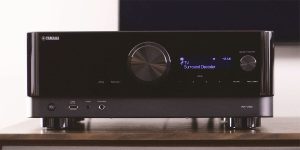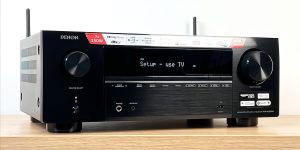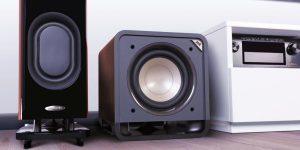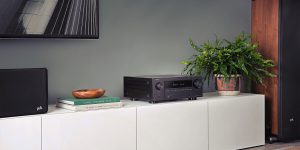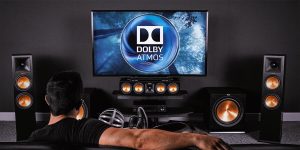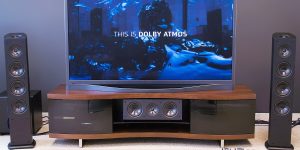As Dolby Atmos has taken the concept of surround sound to a new level in recent years and is becoming more prevalent in the movie theater world, it is no surprise that many people want this technology in their homes. That’s why the world’s home theater developers, keeping up with the times, are releasing more and more models that support this latest technology. Today I have prepared a list of the best Dolby Atmos receivers that will give you a complete immersion in the movies, giving you a sense of presence and participation. In addition, I’ll answer some related questions about using Dolby Atmos. Let’s begin this fascinating journey into the world of panoramic sound.
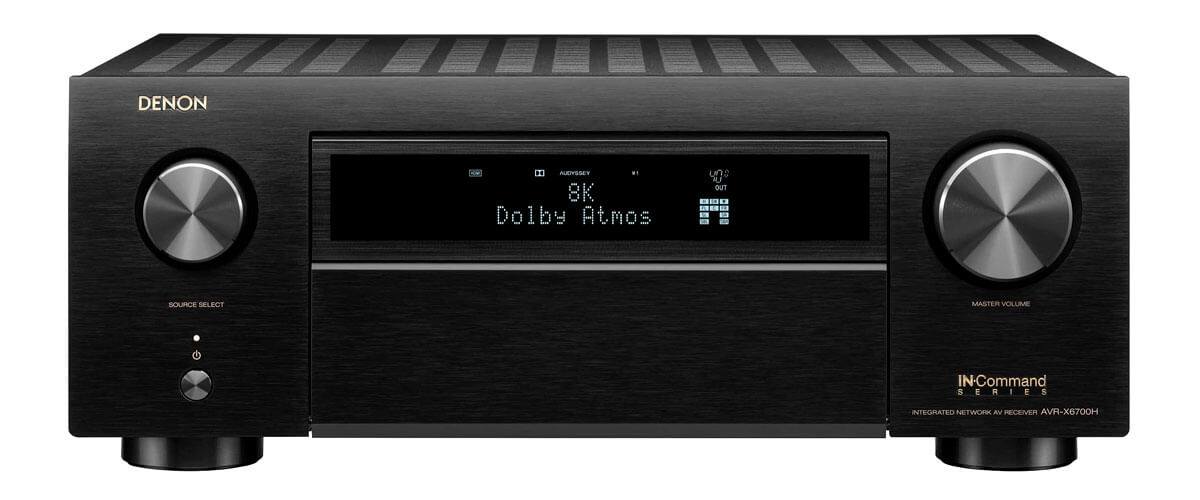
Dolby Atmos receiver comparison table
| Name | Channels | Power output | HDMI in/out | Bluetooth/Wi-Fi | Review |
|---|---|---|---|---|---|
| Denon AVR-X6700H best overall | 11.2 | 140W/8 Ohm, 175W/6 Ohm | 8/3 | yes/yes | Review |
| Denon AVR-X1700H budget | 7.2 | 80W/8 Ohm, 120W/6 Ohm | 6/1 | yes/yes | Review |
| Marantz SR7015 also great choice | 7.2 | 125W/8 Ohm, 235W/6 Ohm | 8/3 | yes/yes | Review |
Which AV receiver do you need for Dolby Atmos?
So, you’ve decided to purchase a receiver with Dolby Atmos support. Of course, the more expensive models of recent years are equipped with this technology. But you can find those with the appropriate parameters in mid-range and even budget-range models. In today’s selection, you will get acquainted with some of the finest receivers on the market that support this technology. But what requirements are mandatory for such a receiver?
For “full” Atmos support (without “Virtual speakers”), first of all, the receiver must have a sufficient number of channels. The minimum configuration should be 7.1 or 7.2. It is often found among mid-range devices. The optimal configuration is considered to be 9.1 or 9.2. But a great choice and the maximum configuration for modern home theater at the moment would be, of course, configuration 11.2 or 13.2.
Best Dolby Atmos receiver reviews
Denon AVR-X6700H – best overall
My Denon AVR-X6700H review allows you to get a closer look at this rather interesting receiver model. It is an advanced modern high-end receiver occupying the X series' middle position. The AVR-X8500H is the flagship of this line, which, of course, is more expensive. And its simplest and cheapest representative is the AVR-X2700H. And today's "guest" takes place between them and is oriented to most users. So I tested X6700H and want to tell you what differentiates this model from the other two, its features, and how it sounds.
Design

In terms of exterior and construction, almost all Denon models look alike. Measuring (without antennas) 17.1 x 15.3 x 6.6, it weighs 32 pounds. The exterior is minimalist, like most of the more expensive models. On the sides of the small LCD, you'll find round Source Select and Master Volume controls, and below the left is the Power button. And that's it! The thing is that the control panel is hidden behind the cover. And there, you have everything you need for setup and jacks: HDMI, USB, Phones, and Setup Mic. I personally love it. Minimal dust, maximum options at my fingertips.
Features and specs
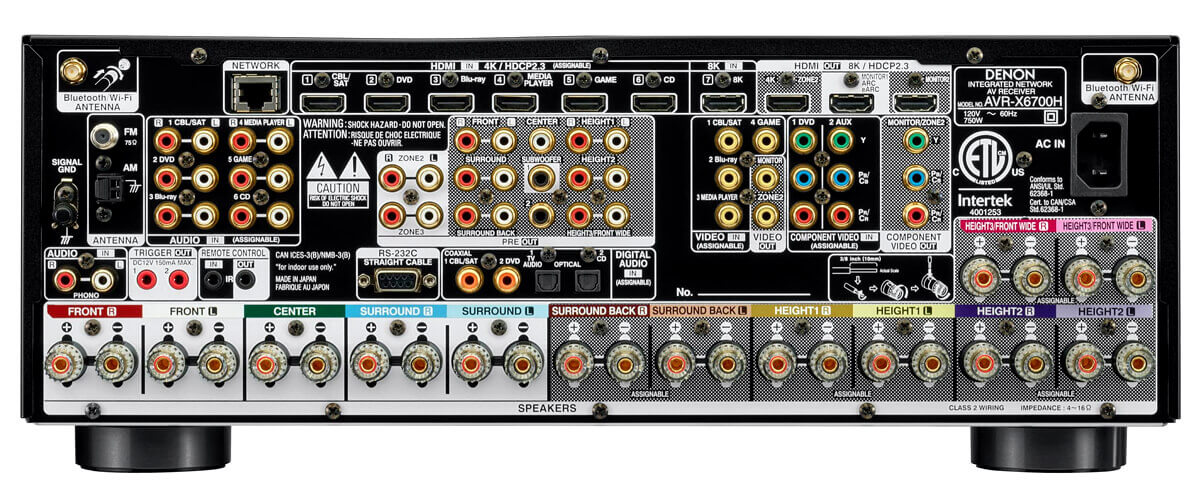
The description of Denon AVR-X6700H features should start with the fact that this is an 11-channel receiver, which means you can create 5.2.6 or 7.2.4 configuration or 5.2.4 systems. The more expensive AVR-X8500H has 13 channels, while the budget AVR-X2700H has only 7. There are also two additional full-featured preamp outputs here, and you can connect an additional stereo receiver and increase the total power for 13 channels for 3 Multi-room zones. The nominal output power is 140 watts (8 ohms, 20 Hz - 20 kHz, 0.05% 2ch Drive) or 175 watts (6 ohms, 1 kHz, 0.7%, 2ch Drive). So for about five channels, you can get 100 watts. For me, that's more than enough!
The connectivity didn't disappoint me. Eight HDMI inputs and three HDMI outputs, one input and two outputs in HDMI 2.1 standard. So 8K support at up to 60 Hz and 4K at 120 Hz are provided, which is not surprising for its rank. The seven inputs are HDMI 2.0 standard but support VRR, ALLM, QMS, and QFT functions, so gamers should be satisfied. All HDR, including Dolby Vision and HDR10+, HDR10, and HLG, and one of the outputs with eARC are supported with any input. At this level, Denon offers no longer just a video converter but a sophisticated switcher/distributor of any signal available today.
As for audio capabilities, the receiver supports most of the existing latest formats, including Dolby Atmos, Atmos Height Virtualization, DTS:X, DTS Virtual:X, IMAX Enhanced, and Auro-3D. Among the features worth noting is the Pre-Amplifier mode for an external amplifier. Using this mode, you get 4.8 Vrms at the preamp outputs, which is impressive compared to the nominal 1.44 Vrms at the internal preamps.
When listing the specifications of the AVR-X6700H, I can't pass up the following features: support for high-quality audio file formats FLAC, ALAC, and WAV up to 24 bits/192 kHz, the ability to stream, including Spotify, Pandora, AirPlay 2, etc. And the presence of voice assistants from Google, Amazon, and Apple will be a nice bonus to control the device.
Listening experience
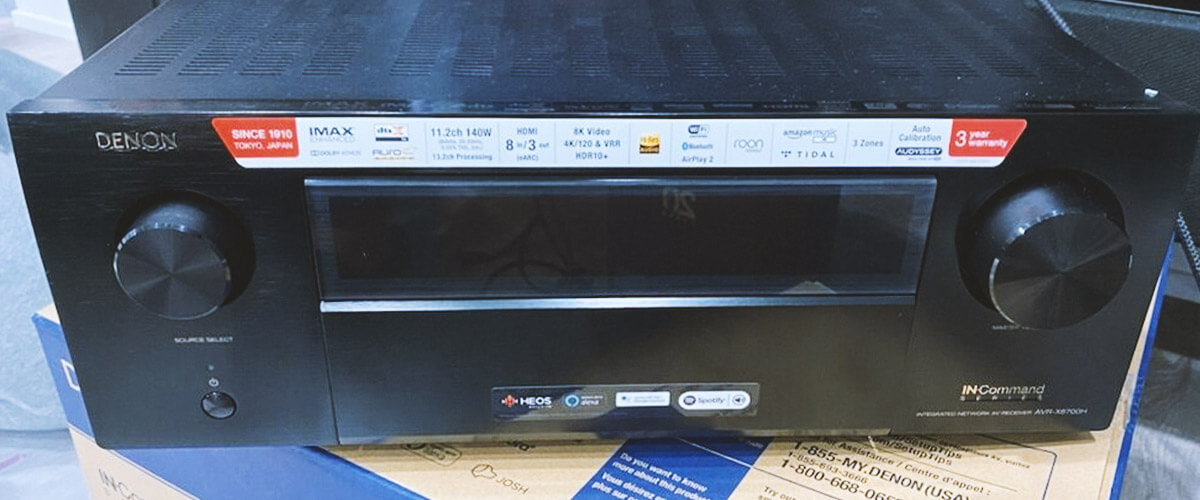
Sound calibration with Audyssey MultEQ XT32 is easy, so it took little time and effort. So I decided to test the X6700H on the Transformers franchise. Do you like to be tossed around in your chair by sound? Then you'll understand me. A total delight! The sound is detailed, and you can hear every single bass (and there are plenty of them in the movie), and the clang of metal was clean and tinkling. It was an enveloping feeling, as if you were participating in the movie's events.
As for the music, I decided to try HEOS since I mostly play tracks from Tidal. Well, it took a little bit of work to set up. But the sound quality was excellent. Mystify, INXS with Spotify made me go to the rock dance. Great, just great.
Key specs
- Channels: 11.2.
- Power output: 140W/8 Ohm, 175W/6 Ohm.
- HDMI inputs/outputs: 8/3.
- Video functions: 8K/60Hz, 4K/60Hz, 4K/120Hz, upscaling to 8K.
- Bluetooth/Wi-Fi: yes/yes.
- Streaming services: AirPlay 2, Spotify, TuneIn, Deezer, Tidal, Netflix, Amazon Prime.
- Supports: HDMI ARC, HDMI eARC, HDMI CEC, HDCP2.3, HDR10+, Dolby Vision.
- Surround sound: DTS:X, DTS Virtual:X, Dolby Atmos, DTS HD Master, Dolby TrueHD, Auro 3D.
The best Dolby Atmos receiver by all parameters is the Denon AVR-X6700H. This powerful, cutting-edge 11-channel receiver guarantees an unforgettable movie experience. It has excelled in the sound aspect and has also proven to be a versatile device with many useful features: multi-room, automatic speaker tuning, availability of AirPlay, Bluetooth, Wi-Fi, etc.
Pros
- DTS:X Pro and Auro 3D support.
- Upgraded 8K HDMI video section with eARC and HDCP 2.3 support.
- 3 multi-room zones.
Cons
- Some users will want to turn the bass down.
Denon AVR-X1700H – budget
Given the competitiveness of the modern AV receiver market, Denon had to take a bold step to strike its competitors. From the first glance at AVR-X1700H specifications, I realized that the competition would be fascinating. And I wasn't wrong back then.
The Marantz has a slim but mighty 5.2 channel NR1510 receiver in this price range. In turn, Yamaha doesn't seem to take a backseat with their 5.2 channel RX-V4A. And when the Denon cavalry, the AVR-X1700H, arrived in October 2021, the market already had the AVR-X2700H. Nevertheless, the hero of my review is not the most expensive model among analogs and is cheaper than the X2700H. So now, when some time has passed, I can make a comprehensive Denon AVR-X1700H review to see whether this unit is actually worth all the fuss around.
Design
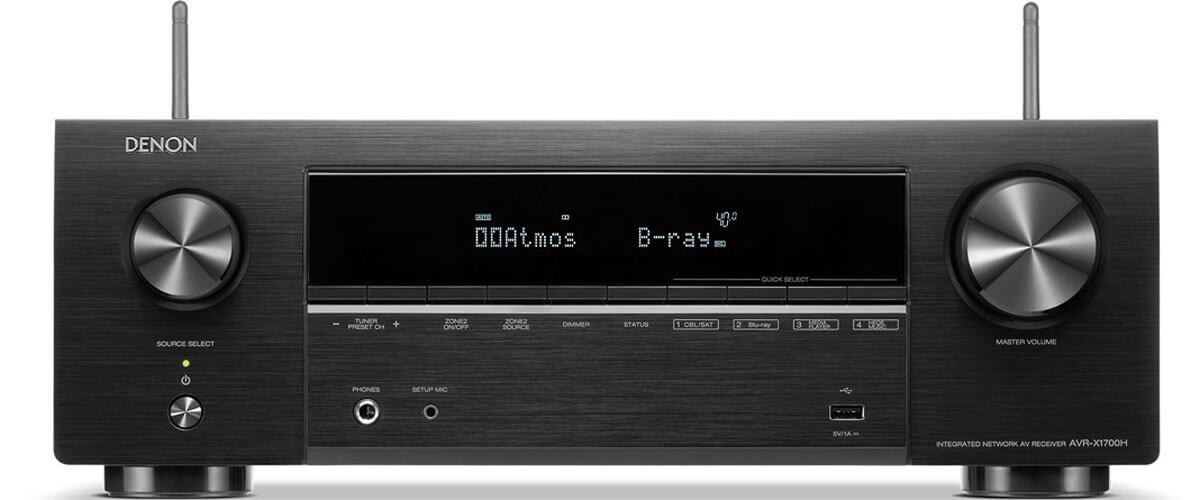
The AVR-X1700H is not a trendsetter when it comes to design. I didn't manage to find much of a change when comparing the X1700H with X2700H. A classic black box with convenient control surfaces and a big readable screen in the middle. Dimensions are also relatively standard for this price range, 17.1× 13.3 × 6 in. The AVR-X1700H weighs slightly less than the AVR-X2700H - 18.96 lbs vs. 21.
After unpacking the receiver and holding it in the hands, it felt solid and rigid, giving a feeling of holding a costly and quality unit. No strange noises or scary crunch sounds that one may have from more simple units. Even though the AVR-X2700H is more expensive, it has the same case and quality. This aspect enormously benefits the AVR-X1700H, as in some cases, more affordable AV receivers have cheaper cases.
Features and specs
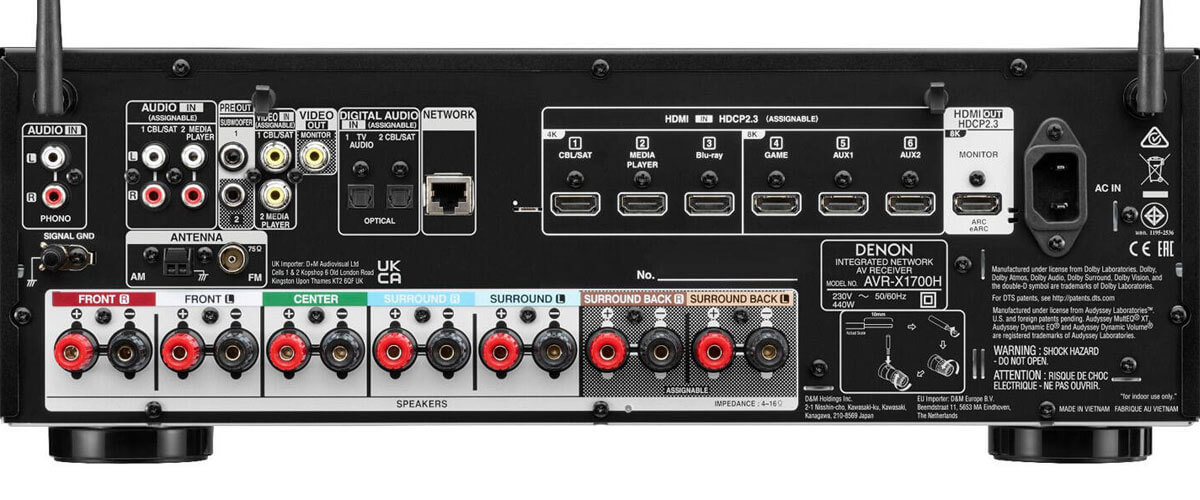
Denon AVR-X1700H has the situation firmly in hand by being a 7.2 Ch AV receiver. For comparison, Marantz, in the same price range, offers 5.2 NR1510, and Yamaha also comes with 5.2 channel RX-V4A. Denon also surpasses its competitors in terms of power, offering 80W with 8-ohm speakers, 20 Hz - 20 kHz, 0.08%. It is enough to fill the middle-sized room with immersive sound, especially with the help of supported Audyssey MultEQ XT and DTS:X technology trees.
Denon has an advantage, having 6 HDMI inputs (HDCP 2.3), 3 of which support 8K resolution at 60 Hz. At the same time, as all analogs, Denon AVR-X1700H features include only a single HDMI output. It also contains 2 composite inputs, a single output, 7 speaker terminals, 2 outputs for subwoofers, assignable bi-amping, an FM antenna, has built-in Wi-Fi and Bluetooth. The receiver fully supports Zone 2 feature, which also gives the AVR-X1700H advantage over the NR1510 from Marantz. The latter supports only HEOS-compatible speakers, with no multi-room feature.
In terms of video capabilities, all HDMI support 4K/120Hz, and, as I have mentioned before, only 3 are 8K/60Hz capable. The AVR-X1700H offers almost complete support of the DTS:X technology family, apart from DTS Neo:X. The same goes for the help of the latest Dolby technologies. But in this case, the only exception is Dolby ProLogic II. HDMI to HDMI scaling and HDR 10+. In terms of video features, the receiver stands alongside its competitors without significant flaws or advantages, with specific characteristics that partially equal it to more expensive models.
Listening experience
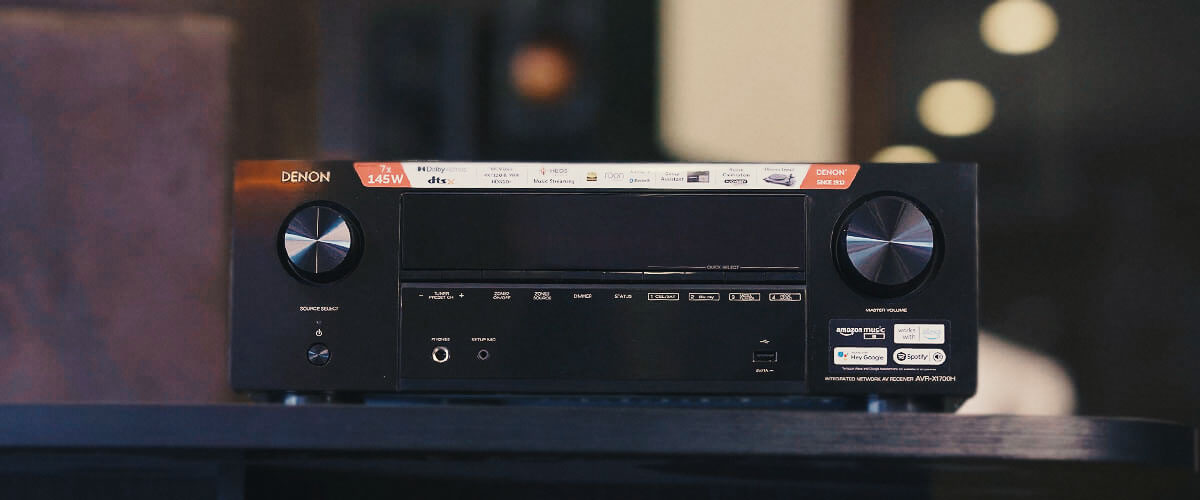
The AVR-X1700H has a pretty pleasant sound when listening to music, showing similar results with a different genre. The level of detail, stability, and vibrato can almost be compared to AVR-X2700H. Compare these two blindfolded, and you won't find much difference in music. With movies, The AVR-X1700H shows detailed, steered, balanced sound. Despite not having the highest power, it delivers just enough to fill a medium-sized room with immersive sound. Two subwoofers work great, delivering theater-like sound.
Denon habitually plays one of the leading companies in the AV receiver industry. Their AVR-X1700H adhered to the company's tradition and didn't disappoint me during the test. It is a severe competitor of Marantz and Yamaha and an excellent choice for optimizing your multimedia system.
Key specs
- Channels: 7.2.
- Power output: 80W/8 Ohm, 120W/6 Ohm.
- HDMI inputs/outputs: 6/1.
- Video functions: 8K/60Hz, 4K/120Hz, 4K/60Hz pass-through, video upconversion (up to 1080p and 8K) for analog and HDMI sources.
- Bluetooth/Wi-Fi: yes/yes.
- Streaming services: AirPlay2, Deezer, Tidal, Pandora, SiriusXM, Napster, SoundCloud, Amazon Music, Amazon Music HD, Mood mix.
- Supports: HDMI ARC, HDMI eARC, HDMI CEC, HDCP2.3, HDR10, HDR10+, Dolby Vision.
- Surround sound: DTS HD Master, DTS Neural:X, Dolby TrueHD, Dolby Surround, Dolby Digital Plus, Dolby Atmos Height Virtualization, Dolby Atmos, Multichannel stereo.
The best budget Atmos receiver today is the 7-channel AVR-X1700H. The two subwoofers work flawlessly, and the overall multimedia system guarantees balanced sound. Despite the low power, this model can pleasantly surprise you. Don’t forget that this is Denon, which means the tradition of quality is upheld!
Pros
- Support for 8K.
- Multi-room (Zone 2).
- Supports the latest audio and streaming formats.
Cons
- Not the easiest setup.
Marantz SR7015 – also great choice
The Marantz company is considered one of the leaders in the receiver manufacturing industry. Their products have many fans around the world. However, the modern market is filled with various exciting models of this brand, and it can be challenging to choose. That is why I have prepared the Marantz SR7015 review for today. It is IMAX Enhanced certified, supporting Auro-3D's proprietary immersive audio technology, enhanced by the Auro-Matic mixer that delivers three-layer sound, including standard surround, ceiling, and height speakers. This technology makes Marantz's immersive sound stand out from many competitors.
Another famous Marantz technology allowing this company to compete with Denon successfully is HDAM (Hyper Dynamic Amplifier Module). It is used on top-level AV receivers, such as the SR7015, and focuses on noise reduction. Therefore, providing accurate, clear, and detailed sound while still making it feel dynamic, the SR7015, in some cases, outperforms even the mighty Denon AVR-X8500HA.
Design
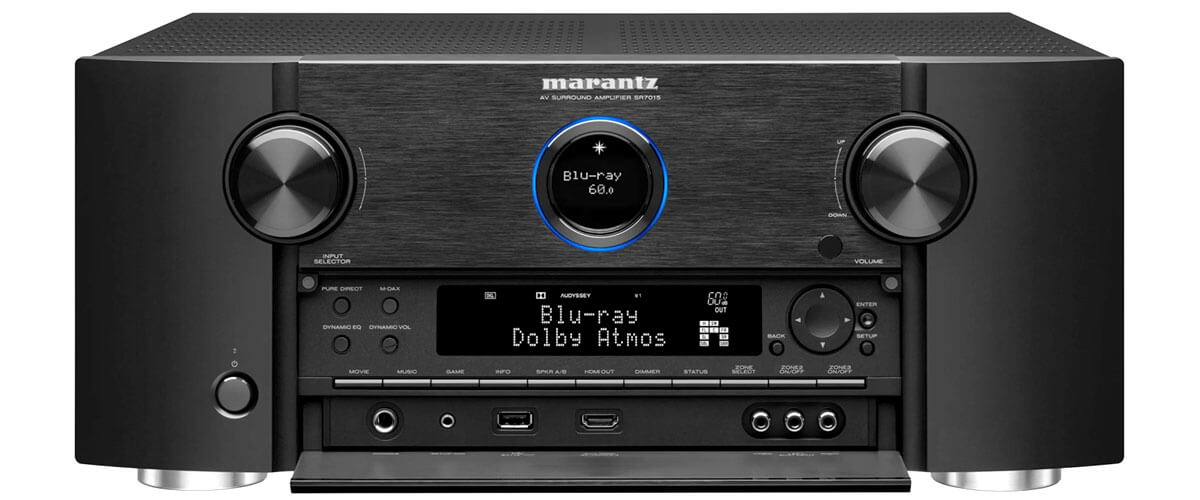
Like other receivers from the product line, the SR7015 offers a classic design consistent with the company traditions. Curvy sides somewhat distinguish it from other AV receivers from other brands. There is a huge power button supplemented by input controls on the left. The right side offers a large volume control dial. The display between these dials shows only the bare minimum information. It's not bad, and besides, Marantz has always been famous for its desire for minimalism and ergonomics.
From the first touch, the unit feels rigid and well-developed. All elements (even the smallest ones) and components look solid and of high quality. However, in terms of size and weight, it is not distinctive from other receivers from the same price range. The unit's dimensions are LxWxH 16.54 x 17.32 x 7.48 inches, and it's a bit heavier than 30 lb. The SR7015 comes in two colors: silver-gold and black.
Features and specs
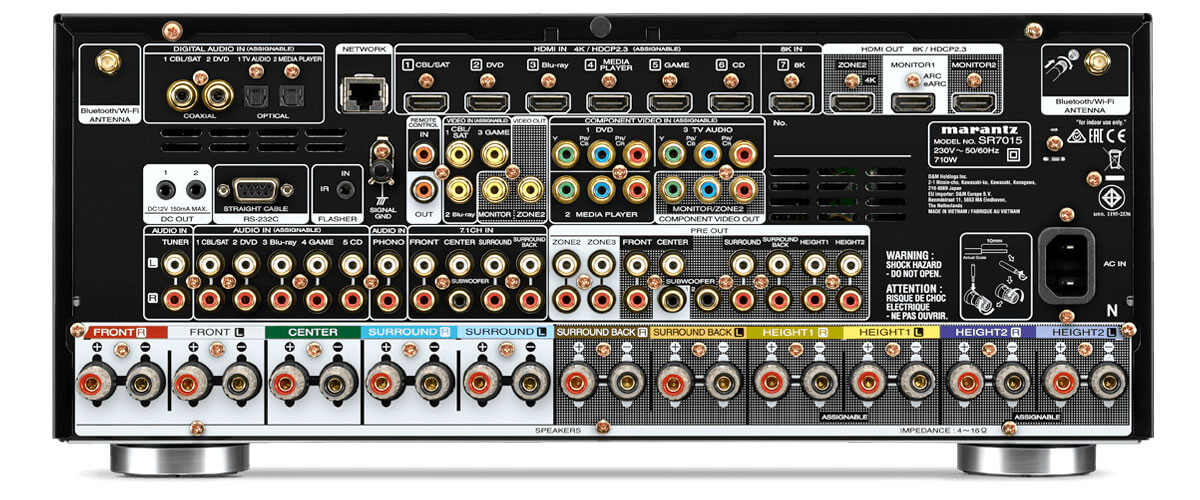
The Marantz SR7015 is a 9.2-channel AV receiver. According to the SR7015 specifications, it offers 125W power per channel with 8 Ohms speakers with 20Hz-kHz 0.08% THD. When using 6 Ohms speakers, it provides 165W 1 kHz with 0.7% THD. The AK4458 chip is a central audio processor in this receiver which guarantees a quality sound without interference. An interesting aspect is that the audio processor can support up to 11 channels, but the receiver has only 9 built-in amplifiers. So it may need an additional amplifier to show its potential entirely.
The SR7050 has a rich set of inputs, including 8 HDMI (1 front) support HDCP 2.3. Sadly, only a single HDMI input supports 2.1. Other inputs include a single USB, 4 composite videos (1 front), 7 line RCAs, 2 coax, and 2 digital optical and 6 analog inputs (1 front). Outputs include 3 HDMI (1 supports eARC), and a single HDMI supports 8K/60Hz and 4K/120Hz. Other ports include Ethernet, remote control, FM/AM antenna, and RS-232C port. The unit is equipped with 2-band Wi-FI and Bluetooth and supports the AirPlay2 function. Also, the receiver supports Deezer, TuneIn, Spotify Connect, TIDAL, Amazon Music, and Amazon Alexa voice assistant. In my opinion, this model's range of features and versatility is clearly above average.
Just like older receivers had to come with built-in support of radio features, modern receivers must support Zone 2. The SR7015 pleasantly surprises by allowing the arrangement of three separate audio rooms as it supports Zone 2 and Zone 3. Also, the model has access to the HEOS ecosystem, which allows for organizing a multi-room setup and managing all the devices through a single application transferring data between HEOS-compatible systems.
This model supports 8K 60 Hz video, including 8K upscaling, with support for HDR options: HDR10+, Dolby Vision, Dynamic HDR, HLG, and HDR10. Also, the receiver supports Quick Frame Transport (QFT) technology and automatic low latency operation mode (ALLM). Furthermore, Marantz SR7015 features all modern immersive sound formats, including DTS: X and Dolby Atmos, Auro-3D, and even DTS Virtual. Quite a profound set of features. Indeed, I was wondering how it sounds. Therefore, next, I will share my experience testing the sound of the SR7015.
Listening experience
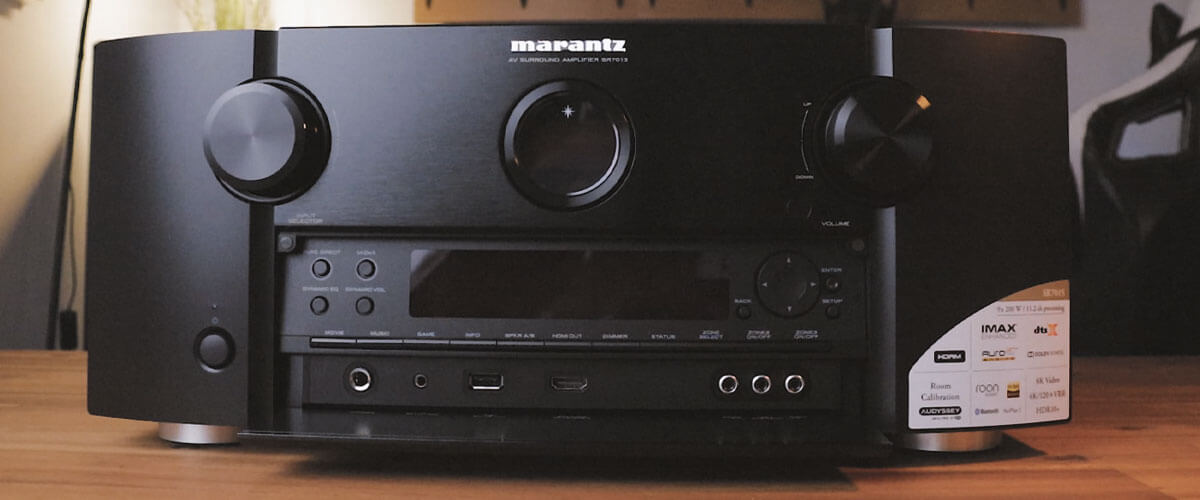
First, I will share how the SR7050 handles surround sound when watching movies. My BP9080X accompanied the receiver to let it show its full strength. The unit provided an incredible bass, filling the room with immersive vibes. It even made my clothes vibrate during active moments. I have to admit a pleasant balance between action scenes and calm moments. In addition, the receiver managed to keep readable dialogues delivering the slightest details. Overall, it left a very positive experience, completely satisfying my needs. I can't wait to get my hands on Avengers 5: The Kang Dynasty to watch with the SR7050.
While music is not the main selling feature for the AV receiver, Marantz SR7050 showed itself very well, keeping a consistent quality and sound distribution. Indeed, a dedicated pre and power amplifier for the same price would deliver a superior and more energetic sound. But concerning its excellent immersive sound in gaming and watching movies, it is a very solid solution worth every cent you pay for it.
Key specs
- Channels: 7.2.
- Power output: 125W/8 Ohm, 235W/6 Ohm.
- HDMI inputs/outputs: 8/3.
- Video functions: 8K/60Hz, 4K/120Hz, 4K/60Hz pass-through, video upconversion (up to 1080p and 8K) for analog and HDMI sources.
- Bluetooth/Wi-Fi: yes/yes.
- Streaming services: AirPlay 2, Pandora, Spotify, Napster, SiriusXM, TIDAL, Deezer, Qobuz, Amazon Music.
- Suppots: HDCP2.3, HDMI ARC, HDMI eARC, Dolby Vision, CEC, HLG, HDR, HDR 10+.
- Surround sound: DTS HD Master, Dolby Atmos, Dolby Atmos Height Virtualization, Dolby TrueHD, Dolby Surround, DTS:X, DTS Neural:X, Multichannel Stereo, Auro 3D, IMAX Enhanced.
The 9-channel Marantz SR7015 receiver is also great for Dolby Atmos. It delivers incredible bass, filling the room with really exciting vibrations. At the same time, it manages to keep the dialogues readable, conveying minor details. As for superb immersive sound in games and movies, it’s a reliable solution worth every penny you’ll pay.
Pros
- Supports Auro-3D, IMAX Enhanced, and DTS Virtual.
- Delivers 8K/60Hz video.
- Phono stage.
- Multi-room.
- Excellent build quality.
Cons
- Without opening the cover of the main display, you can not see some of the settings.
Yamaha RX-A6A
The receiver is the heart of the home theater system. Thanks to it, you can have an unforgettable experience and add some bright colors to watching movies and listening to music. Today, I have prepared a Yamaha RX-A6A review for you. In my opinion, this device is perfect for the most avid fans of high-quality sound.
The RX-A6A was created in 2021 and is the second model in the premium Aventage series. However, there is not much difference between it and the top flagship RX-A8A, and many of the same technologies are available here at a better price.
Design
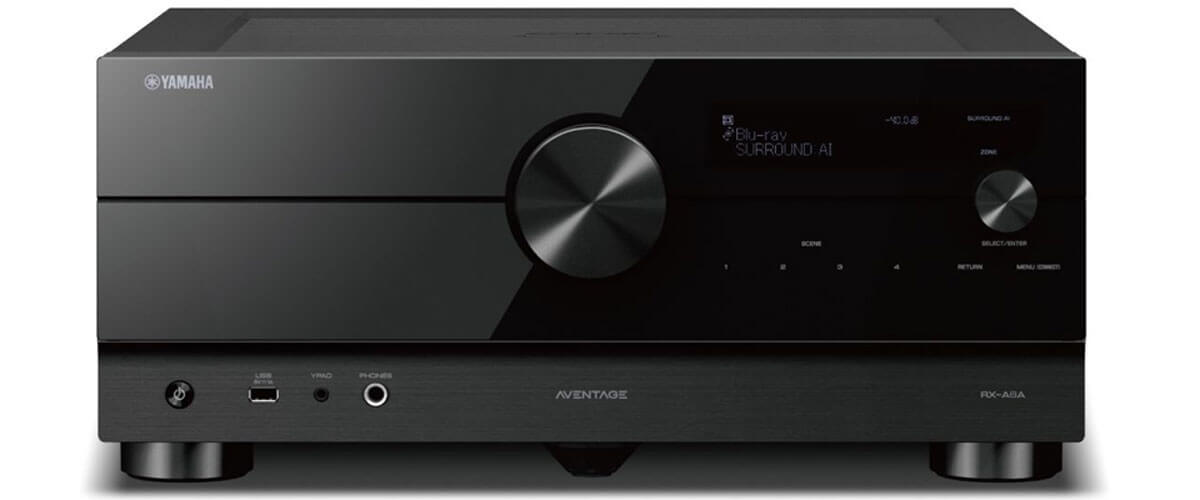
Externally, all models of the Aventage series resemble each other, having a pleasant and minimalistic design. The RX-A6A has a glossy black panel with a vast built-in volume control in the center, an input select dial, and an LCD (which can be customized to show the information you want).
You won't find many connectors on the front panel. Such a solution preserves the neatness of the receiver. There is only a 6.3 mm headphone jack, a USB-A port, and a mini-jack for auto-calibration. Audio noise has been reduced thanks to Anti Resonance Technology (A.R.T.) Wedge. Convenient, simple, and ergonomic. I like it.
Features and specs
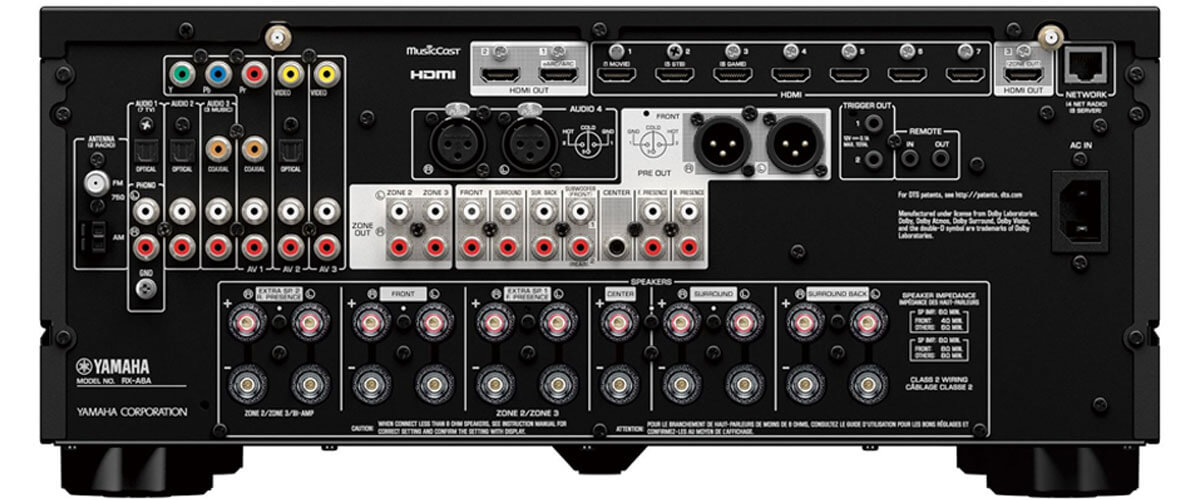
The receiver has a 9.2 channel amplifier with 150 watts per channel (8 ohms, 20Hz - 20kHz, 0.06% THD, 2ch driven). Also, the Yamaha Aventage RX-A6A features a 32-bit SABRE PRO Premier ES9026PRO DAC (main channels) and an ES9007S (height channels).
As for the video capabilities of the model, it supports 8K resolution, last HDR formats, and enhanced gaming. After the testing, I was pleased with the result. The picture was at the highest level, as the movie scenes looked bright and clear. I especially liked the detailing of the individual elements. Due to this, my eyes were not tired after the prolonged viewing.
Also, it presents a fairly wide range of possibilities when it comes to the specifications of the RX-A6A and connection options. It has 7 HDMI inputs and 3 HDMI outputs with HDCP 2.3 and eARC support. By the way, all these ports have HDMI 2.1 with up to 40 Gbps bandwidth. Connection methods include 2 subwoofer outputs, Wi-Fi, Bluetooth, USB port, Phono (MM) input, and so on. Basically, it has everything a modern receiver should have. Therefore, I give another plus to this model.
RX-A6A supports the latest surround sound formats, such as Dolby Atmos, Auro-3D, and DTS:X with CINEMA DSP HD3. Agree that such a set immediately indicates that watching a movie will now become a whole new level of quality. Definitely, it's a plus.
The advantage of this device is also the ability to easily and quickly play music from different streaming services through the MusicCast App. And I have to say, there are many of them, including Spotify, Pandora, Tidal, and others. As for iPhone owners, they will like the presence of AirPlay 2 technology. Convenient features also include the presence of three multi-room zones, which is quite rare (mostly, there is support for 2 zones) in mid-range models.
Despite the excellent hardware and a wide range of features, the small and poorly readable display frustrated me a bit. Obviously, Yamaha sacrificed screen size in favor of a minimalistic and beautiful panel.
Listening experience
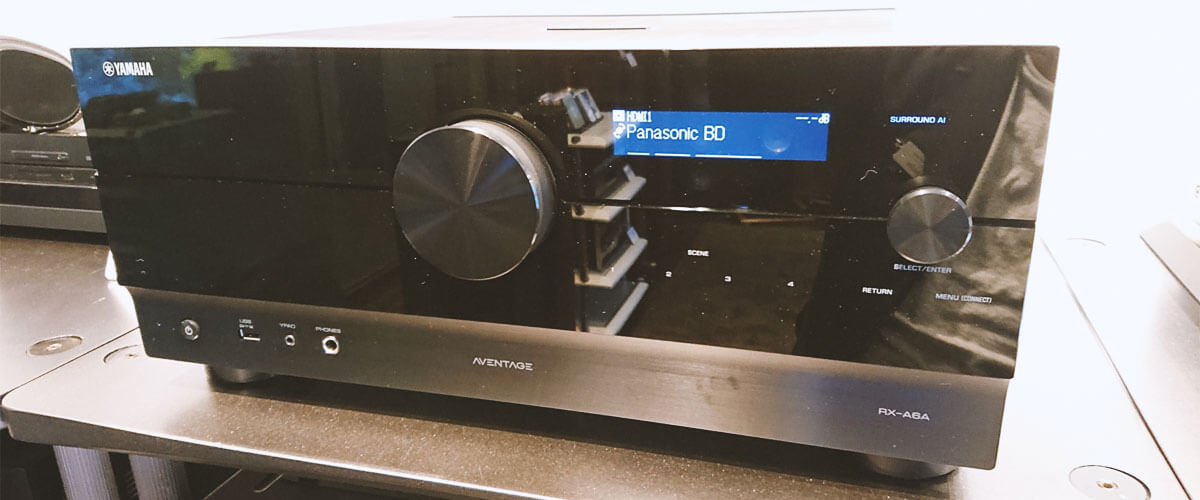
Now let's talk directly about my testing experience. For starters, I calibrated the sound with the YPAO-R.S.C. Although the sound improved, Denon and Marantz have already switched to the more advanced Dirac Live. The setting options are more advanced there, although YPAO is quite able to cope with its task.
The two-channel mode is neutral without adding the typical Yamaha warmth. I did not like Surround:AI because it distracted me by turning on and off the reverb effect in songs where there are vocals and instruments.
As for the surround sound, it was top-notch! The dialogues were heard clearly and perceived in a completely new way. In addition, the action scenes made me shudder and relive everything together with the hero. In a word - great!
Key specs
- Channels: 9.2.
- Power output: 150W/8 Ohm.
- HDMI inputs/outputs: 7/3.
- Video functions: 8K/60Hz, 4K/120Hz, 4K/60Hz pass-through, video upconversion (up to 1080p and 8K) for analog and HDMI sources.
- Bluetooth/Wi-Fi: yes/yes.
- Streaming services: AirPlay2, Deezer, Tidal, Pandora, SiriusXM, Napster, SoundCloud, Amazon Music, Amazon Music HD, Mood mix.
- Supports: HDMI ARC, HDMI eARC, HDMI CEC, HDCP2.3, HDR10, HDR10+, Dolby Vision.
- Surround sound: DTS HD Master, DTS Neural:X, Dolby TrueHD, Dolby Surround, Dolby Digital Plus, Dolby Atmos Height Virtualization, Dolby Atmos, Auro-3D
The Yamaha RX-A6A 9-channel Atmos ready receiver offers clear, crisp, detailed, very realistic playback without delay. Every word, every sound, is in its place. In addition, it’s fully packed with online and offline features that put it in high gear, just like the other receivers in the Aventage lineup.
Pros
- 7 HDMI 2.1 inputs and 3 outputs with HDCP 2.3 and eARC support.
- Very easy setup, both automatic and manual.
- Availability of YPAO, Surround: AI.
- Dolby Atmos Height Virtualizer and Auro 3D support.
- Pass-through video signal 8K/60 Hz.
Cons
- Small screen on the front panel.
Denon AVR-X4800H
It wasn't long since Denon put the market of AV Receivers on the blades with its AVR-X4700H, and they have already presented the new AVR-X4800H. Considering all the fuss about their new receiver, I didn't have to think twice when I got the chance to make a Denon AVR-X4800H review.
The AVR-X4700 belongs to the same price range yet comes a bit cheaper than the new AVR-X4800H. Altogether, the new unit is an upgraded version that offers an upgraded 9.4-channel amplified sound, including 4 independent subwoofers. Theoretically, this provides an immersive experience, especially including HEOS support and Zone 3 features. All these features may take this receiver to the top, especially considering its price.
Design
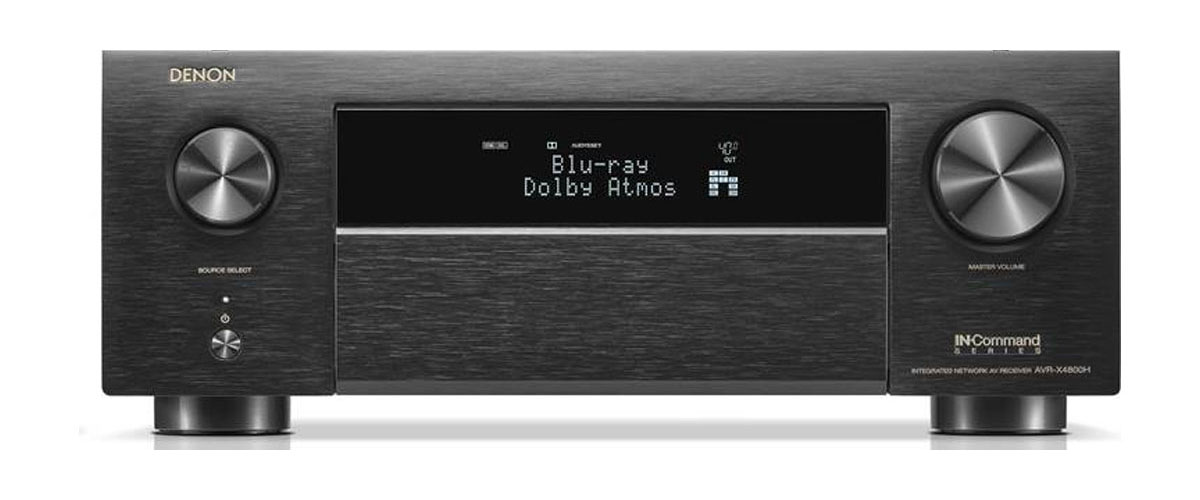
In terms of design, the new model offers next to nothing special. From the first glance at the front panel, one may not even see the difference between these two devices. The same large control surfaces, a small power button on the lower-left side, and a large screen with valuable information.
Altogether, the AVR-X4800H follows Denon's traditional design path - making solid, well-built, classically designed receivers. The unit's chassis is robust and reliable, but at the same time, it requires quite a bit of space, considering its size of 17.1 x 6.6 x 14.9". Weight is not much different from its predecessor or models from competitors, such as Marantz. The unit weighs 29.1 lb.
Features and specs
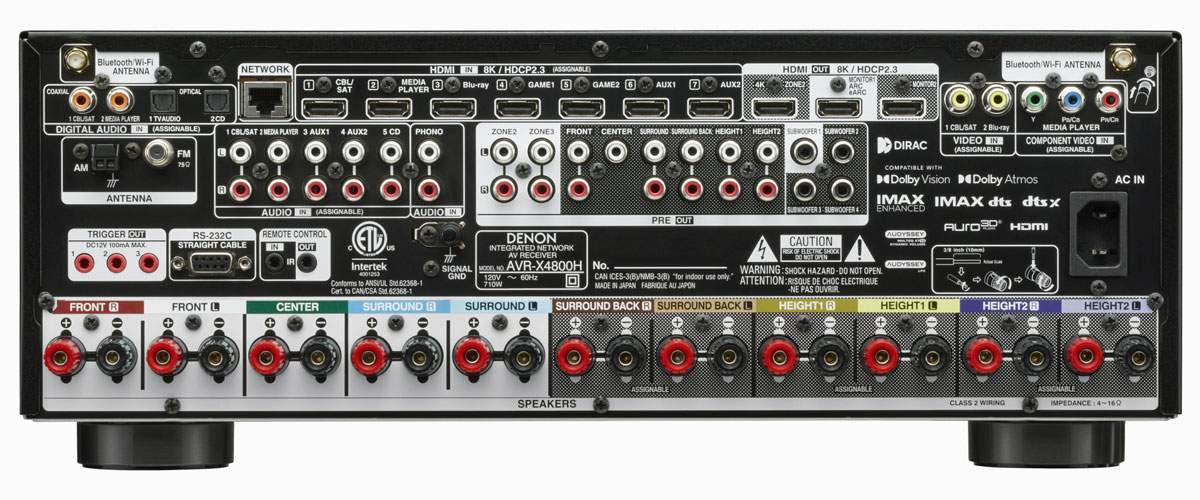
The AVR-X4800H is a 9.4 channel 8K compatible AV receiver. It delivers up to 125W of power per channel with 8-ohm speakers (20-20,000 Hz) at 0.05% THD. The device fully supports Dolby technologies, including the latest DTS Virtual:X and Auro-3D. An exciting moment is that the device has 4 amplified subwoofer outputs, creating an immersive and deep sound in several zones. According to the AVR-X4800H specifications, it supports Zone 3 features, creating up to 3 separate rooms and controlling them from a single unit.
The receiver has 7 HDMI inputs. Sadly, none of them is located on the front side. Also, on the rare side, there are 3 HDMI outputs. All HDMIs are 2.1 and can maintain 8K/60Hz AB or 4K/120Hz AB. Inputs and outputs come with 2.3 HDCP technology. The device has 5 analog inputs, single phono, 2 digital optical and coaxial connectors, an assignable bi-amp drive, and an FM/AM antenna. Network capabilities are presented by fully supporting modern streaming services such as Amazon Alexa, Apple Airplay, etc., 2,5/5Ghz WI-FI, and Bluetooth. Altogether, a substantial number of ports and connectors.
The Denon AVR-X4800H features the latest video technologies. As I have noticed, it showed an outstanding capability with 4K/120hz video and 8K upscaling. The list of other video features includes support for Dolby Vision, HDR10+, and those that came before it, Dynamic HDR. In addition, it allowed me to watch action movies seamlessly, without a single stutter or lag. Speaking about gaming, if you have a compatible console or PC, you can play at 4k 120 frames per second with no problems, thanks to the support of VRR, ALLM, and Quick Frame Transport.
The Smart TV connectivity feature was another aspect that took my attention. With all my respect to the Denon remote, I am more used to my TV one. This feature allowed me to control the receiver connected to my Philips 8K TV via HDMI. Very convenient, especially for those who don't want to manage multiple remotes.
Listening experience
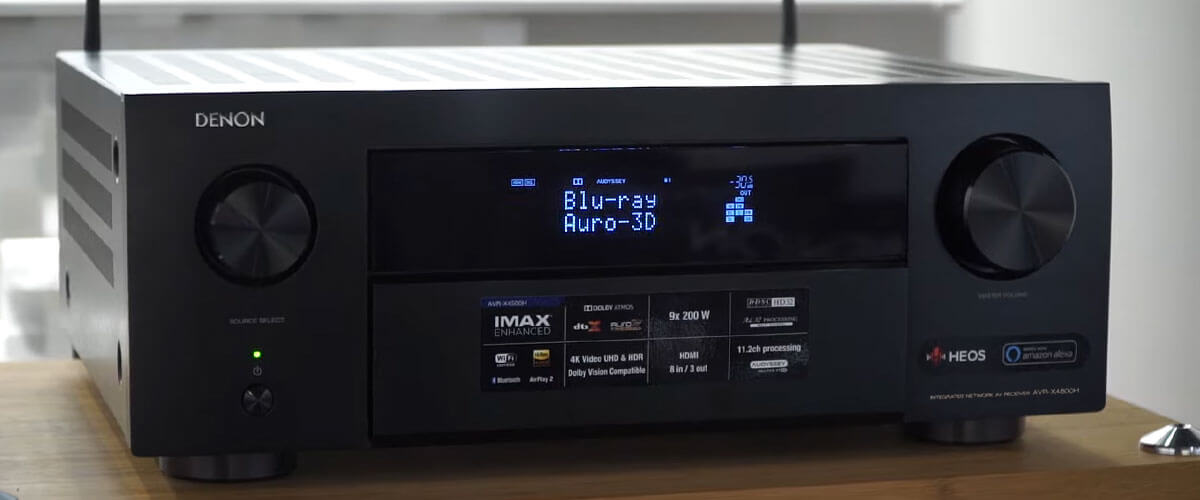
I began my sound test with a rather unusual thing - listening to music. Indeed, one won't buy an AV receiver solely to listen to music, but this is still one of the typical use cases. The AVR- X4800H offers several sound modes. You can conveniently switch between those via the remote or app. Although some sound modes may be somewhat distinct from the original tracks, I made them more vibrant with a phasing effect. Yet, none of the sound modes can fix low-quality songs. Altogether, the unit proved itself to be an improvement over the AVR- X4700H, offering more detailed and broader sound with great detail.
When gaming, the receiver incredibly precisely worked with object-based sounds. In movies, the AVR-X4800H doesn't have the same power as Yamaha RX-A6A but provides a more transparent and precise sound. The truth is that in terms of power, the new model is not much of an improvement over the X4800H. Yet, it surpassed its predecessor in terms of immersive sound and dynamics. The new AVR-X4800H is an excellent and reliable receiver with no game-changing flaws that may spoil the experience.
Key specs
- Channels: 9.4.
- Power output: 125W/8 Ohm, 165W/6 Ohm.
- HDMI inputs/outputs: 7/3.
- Video functions: 8K/60Hz, 4K/120Hz, 4K/60Hz pass-through, video upconversion (up to 1080p and 8K) for analog and HDMI sources.
- Bluetooth/Wi-Fi: yes/yes.
- Streaming services: AirPlay2, Deezer, Tidal, Pandora, SiriusXM, Napster, SoundCloud, Amazon Music, Amazon Music HD, Mood mix.
- Supports: HDMI ARC, HDMI eARC, HDMI CEC, HDCP2.3, HDR10, HDR10+, Dolby Vision.
- Surround sound: DTS HD Master, DTS Neural:X, Dolby TrueHD, Dolby Surround, Dolby Digital Plus, Dolby Atmos Height Virtualization, Dolby Atmos, Auro-3D, IMAX Enhanced, Multichannel stereo.
This 9-channel Atmos AVR is a great solution for most movie buffs and video game enthusiasts. The accurate sound of this model will make you cringe more than once in the most intense moments of a movie or game. And the availability of additional features will be a nice bonus to its good sound characteristics.
Pros
- Support for 8K/60Hz and 4K/120Hz.
- IMAX Enhanced, DTS Virtual:X, and Auro-3D.
- Built-in HEOS technology.
Cons
- No HDMI on the front of the case.
Yamaha RX-A2A
The receiver plays a crucial role in the formation of a complete home theater. Many well-known brands release these devices on the market, but Yamaha has been one of the real leaders in the industry for many years. With these considerations in mind, I have prepared a Yamaha RX-A2A review for you today. The model was released in 2020, belonging to Yamaha's premium Aventage lineup. It is now the most affordable version of this series, combining optimal performance for most of your needs and a reasonable price.
Design
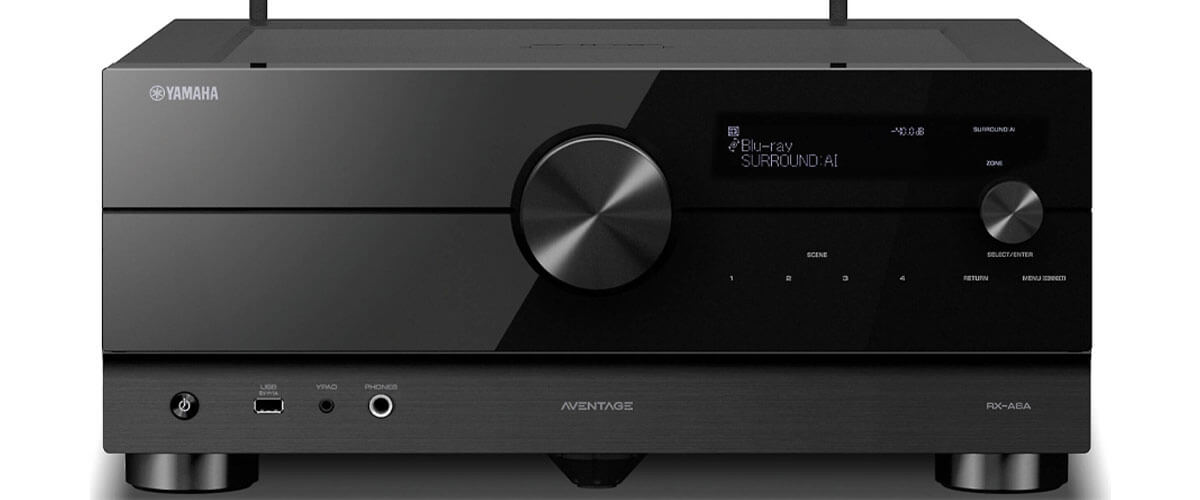
Yamaha has always distinguished itself from competitors through the elaborate design of its products. And the RX-A2A was no exception. The minimalistic design and the glossy black front panel of the device, on which there is a large volume knob in the middle, certainly draw attention.
To the right of the volume control, you will find 4 shortcut buttons. The power button, ports for the microphone, and headphones with 3.5 mm / 6.5 mm connectors are on the opposite side of the receiver, respectively. An excellent engineering solution is using a fifth leg in the center of the chassis model base, damping any vibrations, which positively affects the overall sound quality.
Features and specs
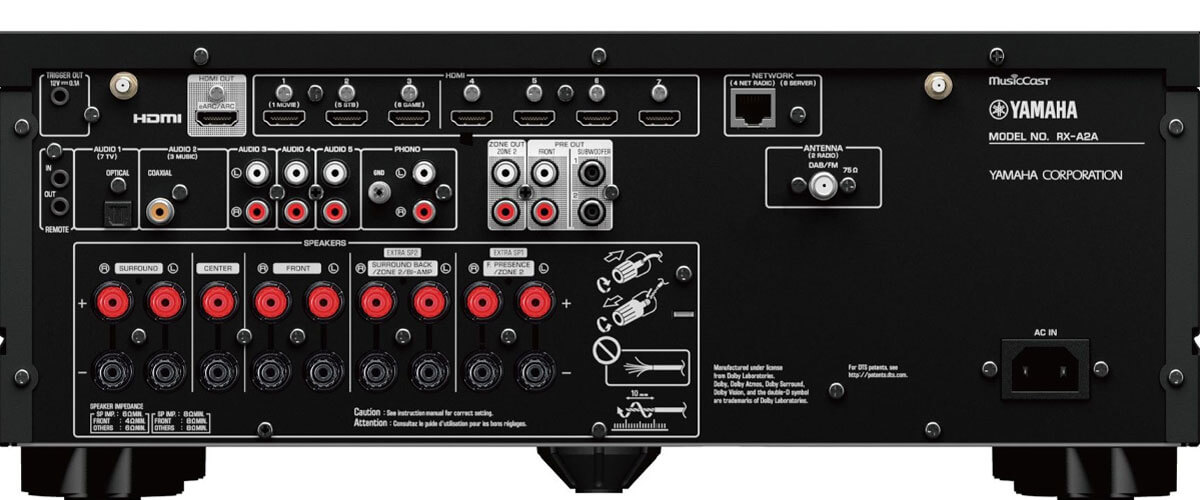
The Yamaha Aventage RX-A2A has a 7.2-channel amplifier with about 100 watts per channel (8 ohms, 20 Hz - 20 kHz, 0.06% THD). Since the device is the cheapest option from the premium class, it is equipped with a 384kHz/32-bit BB PCM5102A DAC. Of course, if you consider newer models, they are equipped with even better components. For example, the RX-A4A already has the latest Qualcomm QCS407 64-bit processor and Surround:AI.
But let's take a closer look at the RX-A2A specifications. It works with 4K resolution (120Hz), HDR10+, Dolby Vision, and Dolby Surround encodings. As a result, the picture looks quite bright and clear. This model also supports 8K resolution (60Hz) and advanced gaming capabilities. The only nuance to consider is that before you turn the receiver on, you must first activate the video synchronization of the TV. If this is not done, sometimes the sound and video will not be displayed, and the image format will be reduced.
There is also support for surround sound formats, such as DTS:X and Dolby Atmos. So watching movies will definitely take you to the next level.
As for connectors and connections, the receiver has 7 HDMI inputs (2.1) and 1 HDMI output (2.1) with HDCP 2.3 and eARC support. Available connection methods include 2 subwoofer outputs, Wi-Fi, USB inputs, network ports, Bluetooth, and Phono (MM) input.
Yamaha has two multi-room zones. This definitely expands the possibilities of using the receiver.This function allows you to enable playback from different sources in the main and Zone 2.
AirPlay 2 technology was also present in this model, allowing my iPhone to stream video and music to supported screens and speakers. So those who are worried about streaming services may not worry - they are also present here.
Listening experience
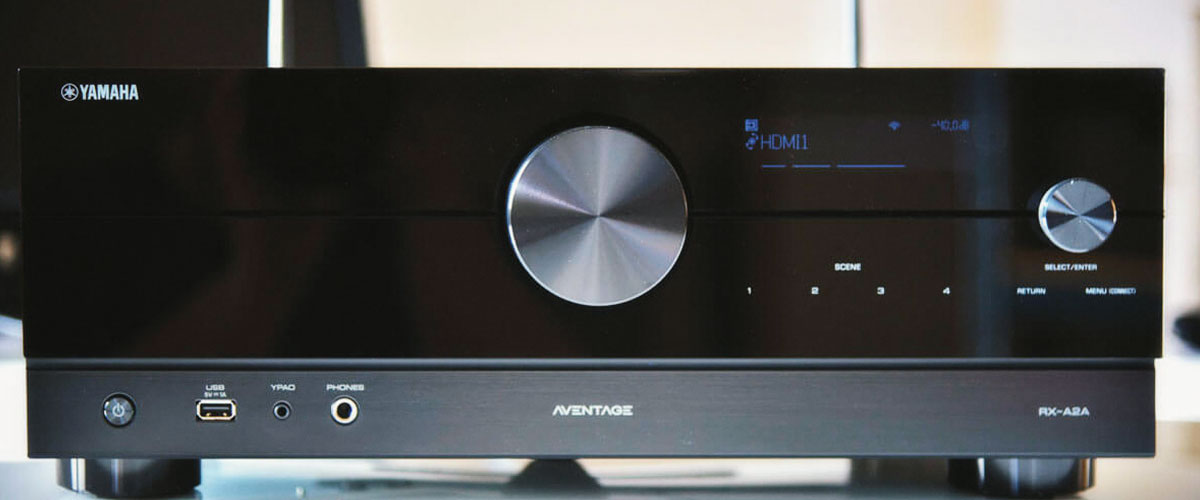
Before using the receiver, I first calibrated the sound with exclusive YPAO technology, and I must say, I achieved excellent results. Watching the movie "Fast and Furious 9" turned out to be quite a thrilling experience. The car chases sounded quite dynamic to me, and the squeals and truck drifts were pleasingly broad and fizzy. Thanks to the presence of surround sound technology, I was able to feel like I was in the middle of the action.
The explosions were less surprising. I'd say they sounded a little rough. As for the rest of the soundstage, it was neatly detailed.
During testing, I faced the problem of delayed sound several times. Namely, "Automatic Lip-sync" did not work correctly. It is hard to say whether this problem is present in all devices of this model or if it was just my "luck."
However, to summarize, I would like to note that the sound did not disappoint me, and although Yamaha RX-A2A is not the leader among the top models, you will definitely be satisfied with the unit for this money.
Key specs
- Channels: 7.2.
- Power output: 100W/8 Ohm.
- HDMI inputs/outputs: 7/1.
- Video functions: 8K/60Hz, 4K/120Hz, 4K/60Hz pass-through, video upconversion (up to 1080p and 4K) for analog and HDMI sources.
- Bluetooth/Wi-Fi: yes/yes.
- Streaming services: AirPlay2, Deezer, Tidal, Pandora, SiriusXM, Napster, SoundCloud, Amazon Music, Amazon Music HD, Mood mix.
- Supports: HDMI ARC, HDMI eARC, HDMI CEC, HDCP2.3, HDR10, HDR10+, Dolby Vision.
- Surround sound: DTS HD Master, DTS Neural:X, Dolby TrueHD, Dolby Surround, Dolby Digital Plus, Dolby Atmos Height Virtualization, Dolby Atmos.
The 7-channel Yamaha RX-A2A is rounding out our chart. This model solves the main tasks perfectly. Not without its minor flaws, but for relatively little money, you can enjoy movies with surround sound. Therefore, in my opinion, additional arguments are unnecessary!
Pros
- CINEMA DSP 3D technology.
- YPAO.
- Compatible with wireless surround speakers.
- Multi-room audio system – MusicCast.
- Phono input.
Cons
- Rarely, but there is a sound lag problem.
FAQ
How does Dolby Atmos work in the home theater?
How can I get Dolby Atmos content?
Since 2015, Vudu has supported Atmos, and you can find many movies with it in its UHD collection. For top-tier subscribers, the technology is available on Netflix. What’s more, the company is releasing all of its latest original movies with the inclusion of a Dolby Atmos soundtrack. Amazon Prime Video, Disney Plus, Apple TV, Rakuten, and Sky offer many movies in this format, but to varying degrees. For example, Rakuten only works with the LG 4K TV brand.
Some live sports, including soccer, are also available in Dolby Atmos. Of course, there is support for the format for PC and Xbox games as well. You can be sure that the technology will fully cover all of these areas in the coming years.
Is Dolby Atmos good for music?
What is a Dolby Atmos Height Virtualization?
Those AV receivers also might be interesting for you:
We are supported by our audience. When you purchase through links on our site, we may earn an affiliate commission at no extra cost to you.
Our newsletter
* We will never send you spam or share your email with third parties

![Best Stereo Receivers [Reviewed and Tested]](https://mediapro-av.com/wp-content/uploads/2024/01/best-stereo-receiver-300x150.jpg)

